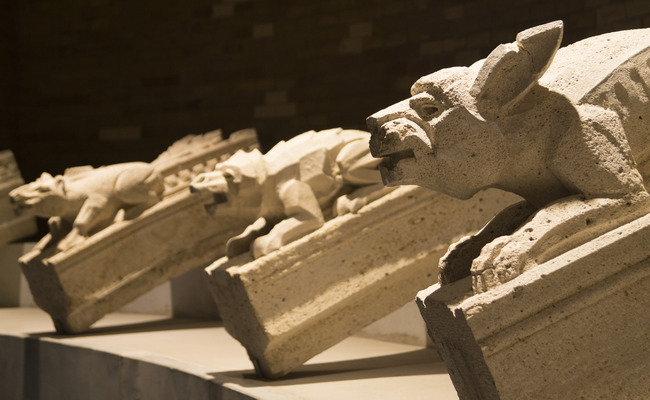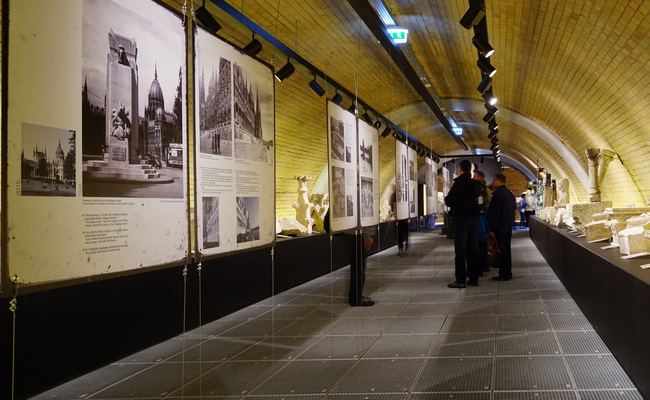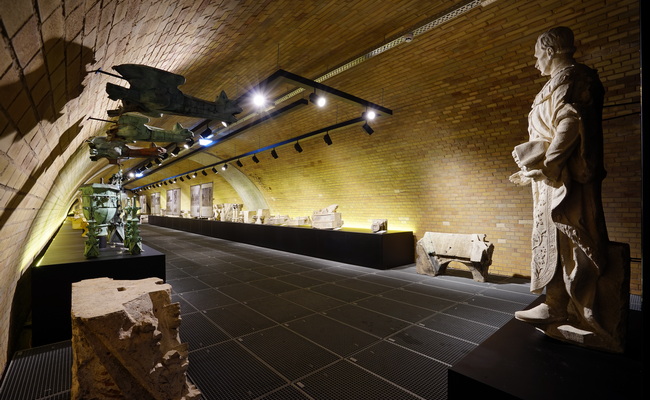Archduke Joseph, Palatine of Hungary and the Statues of Kings
Archduke Joseph, Palatine of Hungary and the Statues of Kings
The largest stone sculpture as well as the only depiction of a person in the exhibition is the multiple life-size, full-length statue of Archduke Joseph, Palatine of Hungary (Florence, 1776 – Buda, 1847), originally placed on the façade of the Parliament building. He is one of 86 historical figures whose portraits adorn one of the facades of the Parliament building. A protracted debate preceded the development of a rich sculptural programme concerning who, where and in which prominent locations they should be set.
From the very outset, it was a basic principle that all the Hungarian rulers and prominent historical figures would be allocated a place in one of the niches. However, maintaining the chronological order of the rulers and their arrangement to ensure that the more important kings would be given a more prominent place proved to be a headache for the decision-makers and designers alike. The final sculptural programme was decided on by Tisza Lajos (Nagyvárad, 1832 – Budapest, 1898), the chairman of the Parliament Building Committee, and Gyula Pauler (Zagreb, 1841 – Badacsonytomaj, 1903), the chief archivist of the National Archives invited by the committee.
In accordance with this, the line of rulers begins at the northern end of the façade facing the Danube and continues onto the south in strict chronological order, and thus ending with Ferdinand V on the southern façade of the building. Right next to him, on the eastern corner of the southern façade, was the now re-sculpted statue of the Palatine Joseph gazing out at the city. Along with four others that decorate the façades, it was made in 1895 by Barnabás Holló (Alsóhangony, 1866 – Budapest, 1917) and his student, Alajos Stróbl. Its position demonstrates that even at the turn of the century the “most Hungarian Habsburg” commanded great respect. But why was his statue and not that of Franz Joseph placed after that of Ferdinand V? This was not a matter of modesty since it was common practice to depict the incumbent rulers; the real reason was that it was originally intended to mount a monumental joint sculpture of King Franz Joseph and Queen Elizabeth in the Parliament building’s interior but it was never actually erected. Great care was taken to convey the accuracy and authenticity of the depictions, so much so that in addition to a jury composed of artists, a special committee was set up that assessed the historical accuracy, and scrutinised the facial expressions, the garments and the details of the weapons.
The degree of meticulousness is clearly demonstrated by the fact that one of the faces was remodelled after a more authentic portrait of the depicted individual turned up in the meantime. In addition to the statue of Joseph of Habsburg, the exterior of the Parliament building on the southern façade is decorated with another three palatines from the 15th and 16th centuries placed not in the row of kings but in the pediment. Allocated a place on the side of the wings facing the city are depictions of church dignitaries, Transylvanian politicians and princes as well as military commanders and heroes, thus complementing the Hungarian historical pantheon decorating the Parliament’s Neo-gothic façade.
Kőtár - jobb hasáb, József nádor










